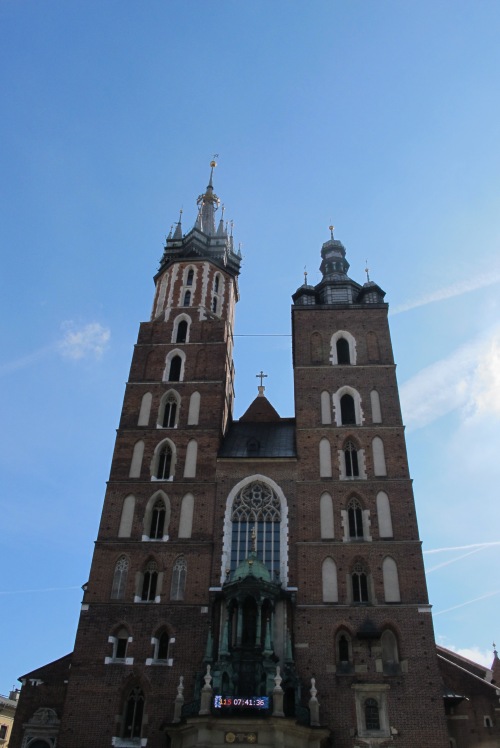
On the 31st I flew to Krakow. It was such a process, and I’m always a bundles of nerves when I travel, but it all worked out. To get to the airport, I have to get to the Gießen Bahnhof, then to the main Frankfurt Bahnhof, then to the Airport. Thankfully, German airports are really easy to navigate and the security lines aren’t crazy long. Once in Krakow, there was a train to the city center and it was a fifteen minute walk to my hostel.
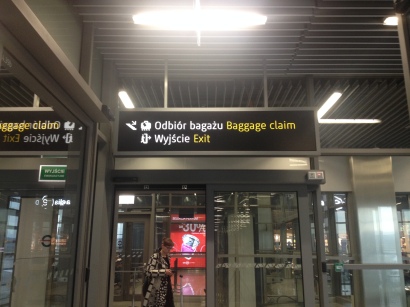 Never been so relieved to see English…
Never been so relieved to see English…
The bad news is that my sense of direction is only good about half of the time. On the way to the hostel, I only knew that I was in the right general area. Then I used google maps, but…my phone battery died…However! I did the smart thing (which again I only do about half the time) and I charged and brought my external battery for my phone.
So I was literally walking around Krakow with a backpack filled to the brim, holding my phone in one hand and my external battery in the other, trying to finding the hostel with google maps. I’m so cool, guys. But the main point is that I actually found the hostel.
My first full day in Krakow was awesome. There’s a company called “Free Tours” in Krakow, and essentially you can take a tour for free with a native Polish person as your guide. You can give tips at the end, and a few of the tours actually cost, but mostly its free. The first tour I took was about Old Krakow. The tour guide’s name was Calen and he was working on a second masters degree in history. He was born and raised in Krakow and did the tours because it was fun for him.
As you know, I’d hate to bore you with history…but Krakow’s history is really cool. First and foremost, I actually saw a sidewalk from the 14th century. Here’s the picture:
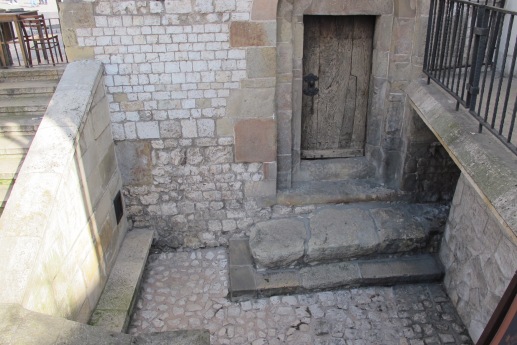
No, that sidewalk did not always lead to a basement-type door. That used to be one of the normal entrances. (The original chapel here was also smaller in the middle ages.) Essentially, since waste systems weren’t really good — in all of Europe — during the middle ages, cities would just build another road on top of the old one after fifty years or a hundred years or so. And they’d leave all the, uh, waste under that new layer of road. So basically every city in Europe is built on piles of rubbish and God-knows-what. 🙂
We went all over old Krakow — from the main square to the Barbican to the oldest building at the university to Wawel Castle.
First a note about the main square. St. Mary’s Church is absolutely gorgeous and boasts the largest altarpiece in all of Europe. Krakow was also one of the main centers of trade between East and West. This city was practically the center of the international world back in the day, and the main square – which was the second largest in Medieval Europe – was filled with merchants from all over the world, had a giant cloth hall, St. Mary’s, the chapel, and the Town Hall. Krakow was even known as the “Rome of the East.”
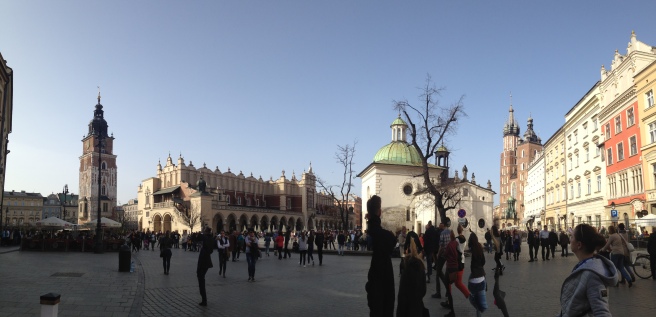
Then there’s the Barbican. Besides the Barbican being one of the coolest defensive structures in the whole city of Krakow, its also been standing for over 600 years. In its time, it’s defended the heart of the Commonwealth from powerful armies like the Russians, Austrians, Prussians and the Ottomans, but unfortunately not the Swedes (Swedish Deluge, late 1600s).
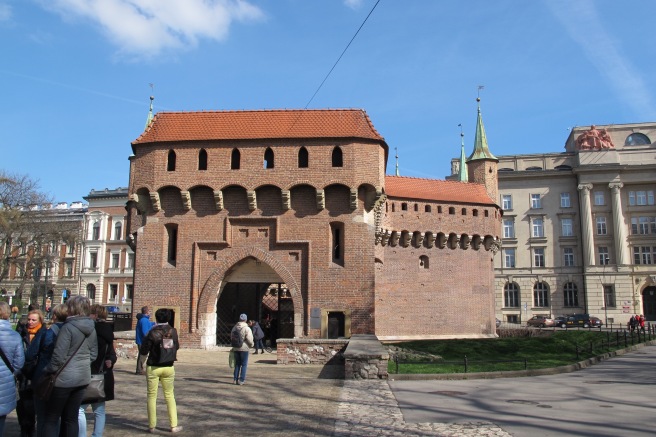
(Let’s be real, the Polish-Lithuanian Commonwealth was a badass among pre-modern states. It deserves so much more credit than it gets in how we remember history.)
And then there’s Wawel Castle. Today it also looks much different than its medieval original, but I saw enough recreations in museums to satisfy me. What is currently standing was mostly built during the Renaissance.
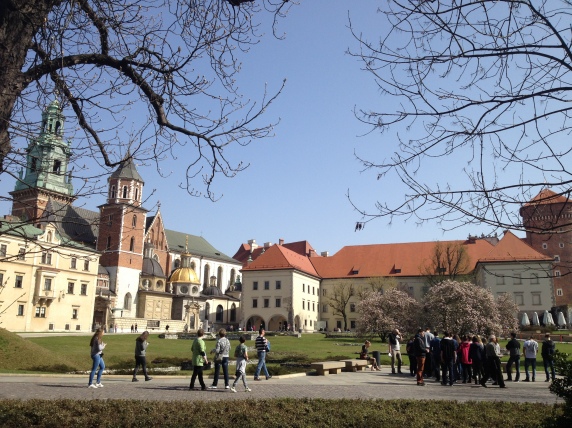
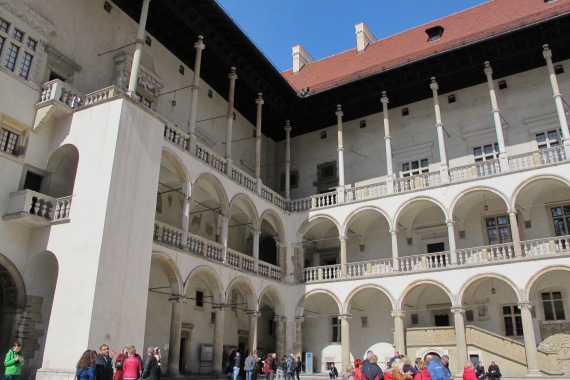
Probably my most interesting adventure was the trek to Krak’s Mound. The story goes that Krak founded Krakow and built Wawel castle sometime before 1000. However, he built the castle on the cave of a dragon, and eventually had to kill it. Later, when he died, he was buried under a large mound, as was pagan custom, and an oak tree was planted on top of or nearby his burial mound.
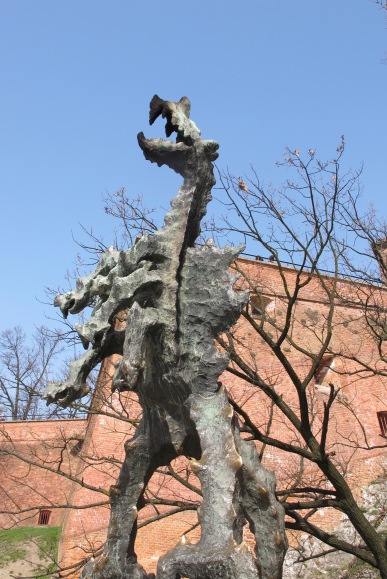
I love this story, but its probably all myth. Pagan burial mounds are common all over the world — from Japan to England. (Usually they’re a few feet high and maybe ten feet long. Krak’s Mound is a giant hill.)
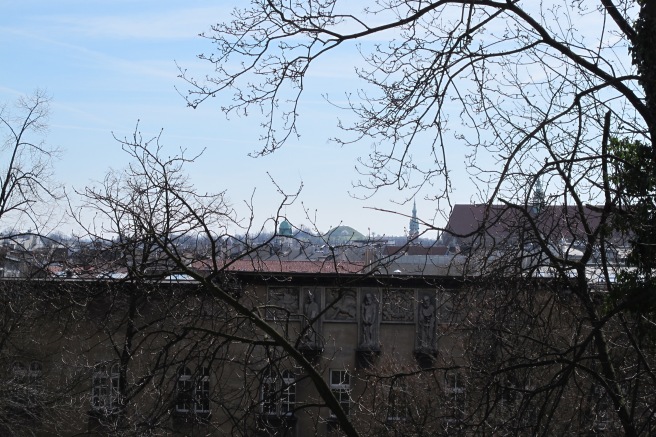 This is from the castle. Yes, that giant green thing in the center is the ‘burial mound.’
This is from the castle. Yes, that giant green thing in the center is the ‘burial mound.’
To get to Krak’s Mound, I had to make my way south past Wawel Castle, and continue south across two bridges which eventually would get me to Krak’s Mound. I just had a tourist map and refused to use my Google Maps, so my only guide was a bit vague on street names.
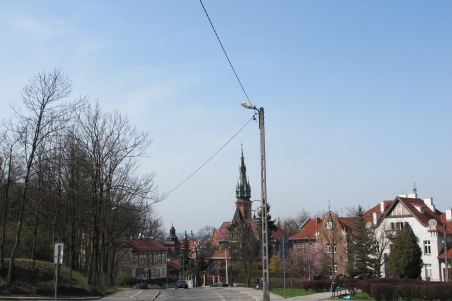
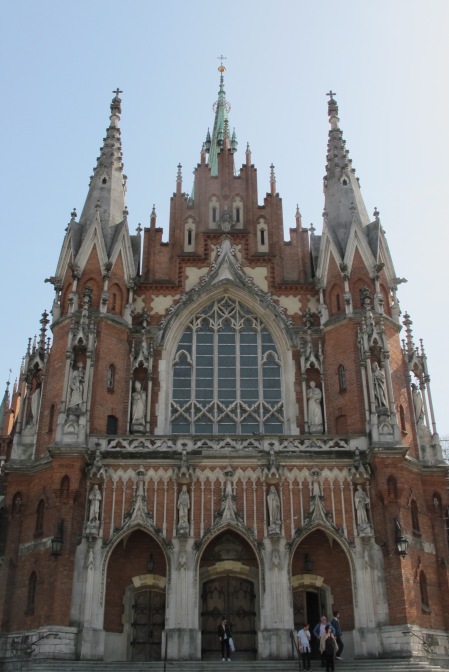
So basically, I wandered around a shopping center, a beautiful old church and park area, through two neighborhoods — one complete with a small convent, — and yes, across the two bridges to finally get to Krak’s Mound. If I’ve ever felt like a pilgrim, I’d say it was then. And the view was totally worth it.
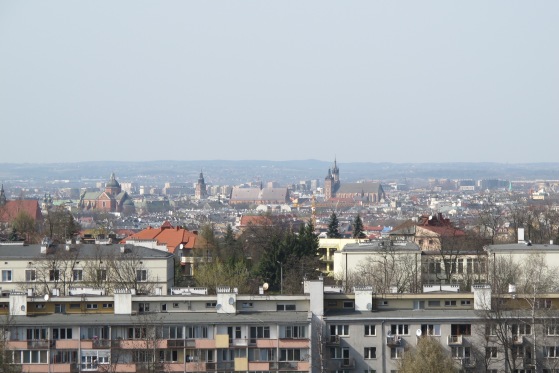
So that’s Krakow! I highly recommend it.
Bis Bald,
Jacque